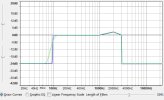QuantumLogic
Jedi
Wow- several of you who replied found some great material on infrasound I had not seen yet- thank you!
As to the recent events regarding the sessions, considering the government could have played this card a looong time ago, I hope the revival of this thread did not contribute to the current plight. I never posted anything after the OP due to lack of responses and assuming it was just noise. But then I remembered from a thread I read here some time ago that sometimes, even if you do know or discover something, you should not necessarily say it or write it- i.e. strategic enclosure. After the C's brought it up in the last session, and knowing the session was public, I didn't see any reason to hold back on the subject anymore.
I feel this may have been a terrible error in judgement. It's one thing to accuse someone (or group) of mind control, but when you show a verifiable means as to how it could be accomplished relative to a current event, it's like opening Pandora's box. I'm sure given the C's candor in the session regarding current events that there are other things as well that could have been the trigger, but I can't help wonder if I should have just left this topic alone. :(
In any case, I have been able to find the files I thought were gone, so after I sort through them I'll start posting some of the papers from journals that detail specific experiments on human physiology. A lot of them have been done since 2008, and mainly by Chinese researchers. I'm trying to find the frequency effect chart that was on a Russian university site which showed all currently known effects from 1hz to 20hz. Unfortunately, the folder had a lot of links saved to these original websites- and many of them are now not working.
At least I didn't lose the .jpg shots of the infrasound measured between 0-5hz in the weeks proceeding and up to 9-11 since the induction magnetometer site at Gakona, AK is now gone. There's almost 5 years of research in that folder, so if anyone is looking for something specific, please ask and I'll see if I have something you are looking for. The most interesting thing I was researching at the end before stopping was the piezoelectric effect of quartz and similar materials and their interactions/effects with infrasound (such as a detector that can sense the P-wave 20-30 seconds before an earthquake actually starts).
As to the recent events regarding the sessions, considering the government could have played this card a looong time ago, I hope the revival of this thread did not contribute to the current plight. I never posted anything after the OP due to lack of responses and assuming it was just noise. But then I remembered from a thread I read here some time ago that sometimes, even if you do know or discover something, you should not necessarily say it or write it- i.e. strategic enclosure. After the C's brought it up in the last session, and knowing the session was public, I didn't see any reason to hold back on the subject anymore.
I feel this may have been a terrible error in judgement. It's one thing to accuse someone (or group) of mind control, but when you show a verifiable means as to how it could be accomplished relative to a current event, it's like opening Pandora's box. I'm sure given the C's candor in the session regarding current events that there are other things as well that could have been the trigger, but I can't help wonder if I should have just left this topic alone. :(
In any case, I have been able to find the files I thought were gone, so after I sort through them I'll start posting some of the papers from journals that detail specific experiments on human physiology. A lot of them have been done since 2008, and mainly by Chinese researchers. I'm trying to find the frequency effect chart that was on a Russian university site which showed all currently known effects from 1hz to 20hz. Unfortunately, the folder had a lot of links saved to these original websites- and many of them are now not working.
At least I didn't lose the .jpg shots of the infrasound measured between 0-5hz in the weeks proceeding and up to 9-11 since the induction magnetometer site at Gakona, AK is now gone. There's almost 5 years of research in that folder, so if anyone is looking for something specific, please ask and I'll see if I have something you are looking for. The most interesting thing I was researching at the end before stopping was the piezoelectric effect of quartz and similar materials and their interactions/effects with infrasound (such as a detector that can sense the P-wave 20-30 seconds before an earthquake actually starts).


